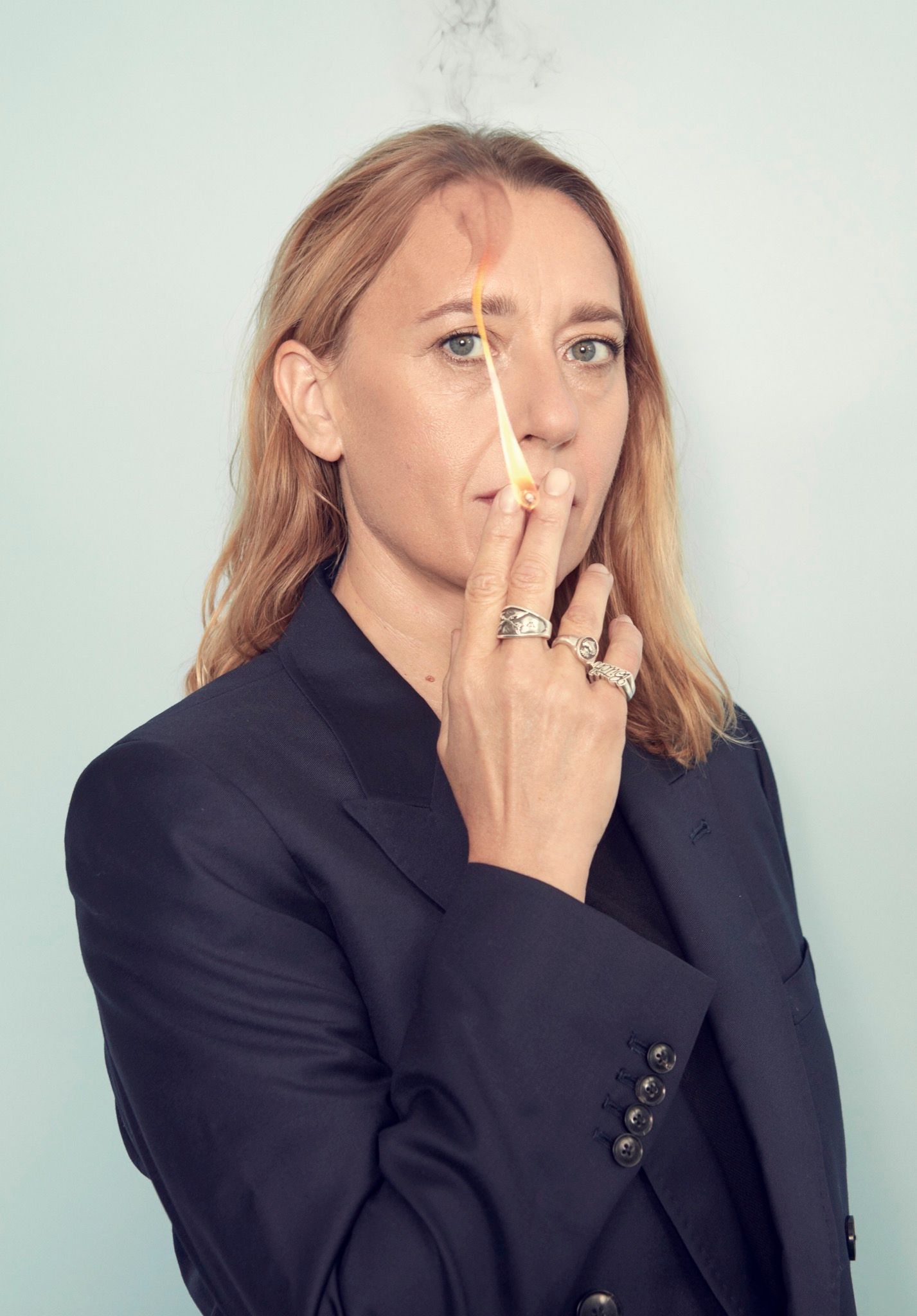SCHIZO CULTURE: Semiotext(e)
In today's media landscape, a book review is often a slap on the back. A handshake among colleagues that says, “well done.” But we have never been afraid to offer critique when critique is due. In our print section Berlin Reviews, we've always tried to take the propositions of a book seriously and push them to their extremes.
Archive Berlin Review from our issue #27.

In 1975, a cadre of France’s most innovative philosophers converged in new York for a colloquium that has been mythologized in decades since. invited by Sylvère lotringer and Semiotext(e), Gilles Deleuze, Félix Guattari, Jean-François lyotard, and Michel Foucault were lured to Columbia University more by a curious sense of danger than the promise of what was billeted as an “unprecedented international exchange/confrontation.” The conference’s title “SCHIZO-CULTURE” was inspired by Deleuze and Guattari’s Anti-Oedipus, but it also painted an accurate portrait of New York at the time. Ridden with crime and on the verge of bankruptcy, the city awaited federal relief funding from the larger United States, which viewed the metropolis as a flamboyant madhouse. New York was a good place to score smack, or get your wallet stolen. It was also a place where the standards of American taste were being rattled by the artists and writers who had taken over its musty tenement buildings and grimy walk-ups. With avant-garde heavyweights William Burroughs and John Cage already on board for the Schizo- Culture conference, it became even easier to entice the foreign contingent to make the journey.
At Columbia, the French philosophers, although virtually unknown to an American audience, were nonetheless greeted by an energetic crowd. Today, Foucault’s Discipline and Punish, Lyotard’s Libidinal Economy, and Deleuze and Guattari’s Anti-Oedipus now serve as a lingua franca for artists and intellectuals, but at the time, they had not yet been translated into english. The attendants of the Schizo-Culture conference were a potpourri of radicals – students, Marxist organizers, militant Feminists, and even self-proclaimed “schizos,” all of whom were intrigued by ideas that merged theoretical discourse with sex and insanity.


Rather aptly, the event bore witness to a good deal of madness. Foucault’s first seminar was disrupted when an agitator in the audience accused Foucault of being an employee of the CIA, to great uproar. When accused again at his second appearance, Foucault fired back, “You’re entirely right. i was paid by the CIA, R.D. Laing was paid by the CIA, Lotringer himself was paid by the CIA. The only one here who wasn’t paid by the CIA is you, because you have been paid by the KGB.” The crowd, including all of his accusers, erupted into laughter. Deleuze, who was skeptical of the translators in attendance, lectured in French with an english cadence. Guattari seemed to be the only member of the colloquium unfazed by the mayhem. During his lecture, he challenged the audience to do something “revolutionary” until they booed him off the podium. outside of the conference, the foreign visitors were difficult to wrangle – and could often be found taking repose at the infamous Chelsea hotel, or boozing at the French Consulate on 5th Ave. Altogether, Schizo-Culture was an untidy affair, with participants sounding off discordant notes into a chaotic din-oscillating wildly between confusion and moments of prescient clarity.
Looking back, Schizo-Culture appears to us as an oddity – an event marooned in the Bermuda Triangle of intellectual history. it is difficult to imagine that in 1975 – ten years before French Theory came into vogue in Anglo-American circles – John Cage shared a podium with Gilles Deleuze. it is nearly impossible to gauge the impact of such encounters, which nevertheless reverberate today in our cultural and intellectual discourse.
On the occasion of the upcoming 40th anniversary of the Schizo-Culture conference, Thom Bettridge discussed the event with philosopher John Rajchman, the conference’s co-organizer and one of the founders of Semiotext(e).

Thom Bettridge: Did the atmosphere of New York in 1975 hold a certain intrigue in the eyes of French figures such as Foucault? I know in the case of Deleuze, he was excited to meet William Burroughs, but what about the others?
JOHN RAJCHMAN: i think the French philosophers, even if in somewhat different ways, were all quite interested in new York. Many stayed in the Chelsea hotel – which, at the time, was very much as Patti Smith describes it in her own memoir, Just Kids (2010). Felix Guattari, for his part, would come back to research gangs in the Bronx, and the others would return for other venues and occasions. in the annals of the introduction and translation of “French Theory,” the conference seems to me in many ways to be quite different from the earlier conference at Johns Hopkins in 1968 – subsequently taken up by Paul de Man at Yale – at once more academic and more literary. Schizo-Culture was more a clash of different strands – only some academic – suddenly thrown together at an unsuspecting university. New York City itself played an important role in this. At the time, it was in a financial crisis, yet it was also the source of many creative projects on the part of artists, who often took the crumbling city itself as a subject of their work.
TB: Why do you think it is that the work of Deleuze, Foucault, et al. did not gain traction in English-speaking circles until years after Schizo-Culture? Do you think that was the language barrier, or some other kind of gap in understanding?
JR: Perhaps Semiotext(e) had some role in how Deleuze, Foucault, and the others came to be translated and read in english. It would later start publishing many of their works in translation, in a pleasing, small format that was designed for popular consumption. That influenced Zone Books, which later would take up the project in a more academic manner. But it is also worth remembering that after 1976, there would be many further developments that affected translation – so many indeed that it is hard for me now to separate out what was going on then. For example, one can now read a letter Deleuze sent to Foucault shortly after Schizo-Culture, filled with doubts and questions about his challenge to “The repressive hypothesis,” in effect the topic of his lecture at the conference. The two then stopped speaking to one another in 1976, until Foucault was dying in 1984 – during which time Deleuze wrote a book on Foucault, which changed how we now see his work, while Foucault would go on to develop new ideas about “bio-power,” which were released only after his death. i don’t think it is possible today to understand the role of the symposium outside many such subsequent developments that we had no way of knowing about at the time. The history of translations is only one way of seeing these changing contexts.
TB: At Schizo-Culture, William Burroughs delivered his treatise on control, which is a theme later activated by Deleuze in his famous writing on “control societies.” Did you notice any other instances of transatlantic cross-pollination taking place at Schizo-Culture?
JR: Yes, i think there were many connections on both sides – colloquiums are often mainly useful for them, especially this one, which was in turn inflected by subsequent developments. For example, in the 80s, when i wrote up Jean-Francois Lyotard’s show “Les Immateriaux” for Art in America, it was the heyday of “postmodernism,” which was in many ways a reaction to the political atmosphere during the time when Schizo-Culture took place. Lottringer himself then had an important role in promoting Baudrillard and the concept of “the simulacrum” in the art-world – not at all of course to everyone’s liking, especially not the group at the conference. Deleuze, and especially Guattari, hated the whole idea of postmodernism.
TB: As a philosopher who has worked closely with artists how would you describe the influx of French Theory into the conversation surrounding contemporary art?
JR: I think there are different avenues for this – and New York, and its art world, would continue to have an important role in them. Indeed the journal October itself would be founded, rather independently, just after Schizo-Culture in 1976. in the first issue, Foucault’s “This is not a Pipe” would figure alongside rosalind Krauss’s analysis of narcissism in video art – part of her own itinerary, with roots in Greenbergian formalism and her magnificent early study of “pas- sages in sculpture.” October helped change the practice of how art criticism and art history are done in relation to the “contemporary art” of the present. Theory had an important role in that. Semiotext(e) was different. It didn’t start in art criticism or art history at all, and it was involved with a different group of “contemporary artists” in New York – The Bernadette Corporation, for example. it might be interesting to one day trace how all this came back to Berlin!
TB: How would you locate the relevance of Schizo-Culture today?
JR: It seems to me today like an extraordinary, if chaotic, confluence at a very intense and singular moment – a conjuncture of forces and ideas. Sometimes unscripted clashes of personalities and preoccupations like this can refract those singular moments in a history – moments which don’t quite fit in, yet, just for this reason, suggest things yet to come. That at least is how i’d like to think of it today – now, when it is making its “return.”

Schizo-Culture is published by Semiotext(e) (Los Angeles, 2013).

